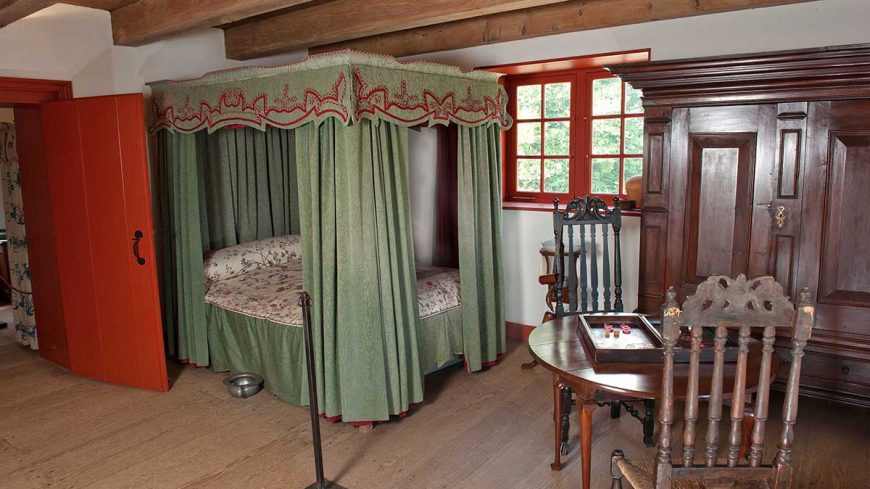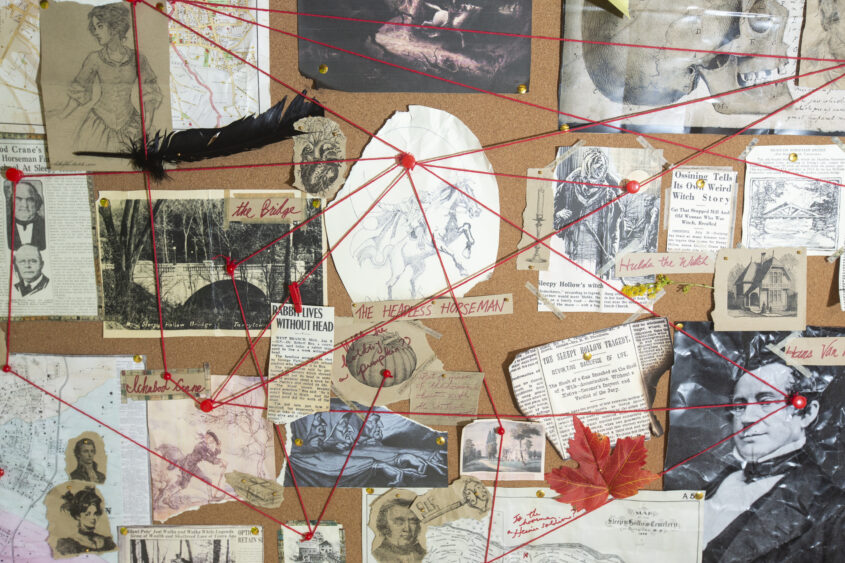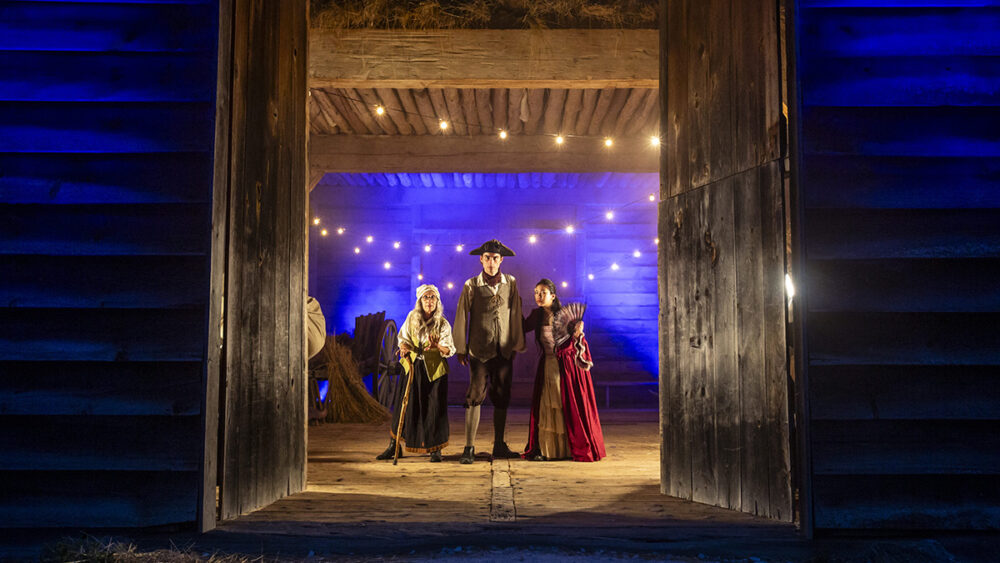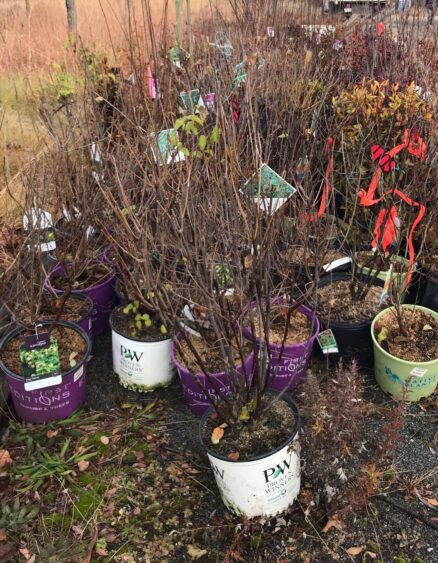Truth or Myth? In Early America, People Slept Sitting Up

Museum interpreters at Historic Hudson Valley hear all kinds of myths from the visiting public about the past. From time to time, we’ll share some of our research to shed light on these historic tall tales.
History Myth: “The beds are shorter because people slept sitting up.”
We ran this by Jessa Krick, Collections Manager for Historic Hudson Valley. Here’s what she had to say:
Like today, some people may have preferred to sleep propped with pillows (like those who snore), but beds were not made shorter because of that. People certainly slept in the same positions as we do today—curled up, stretched out, on their backs or stomachs or sides. There generally weren’t mountains (or multiple) pillows like we have today. A bolster of one or two pillows for each bed seems to be the norm, and plenty of people had no pillows at all.
Eighteenth- and (early) nineteenth-century beds were made individually, so there is no real standard size. The tall posts, bed hangings, pillows make the beds look different or “odd” to the visitor’s eye, but when curators at Colonial Williamsburg measured beds in their collection, all equaled or exceeded the normal size of a double-sized bed today and some were the equivalent of queen- or king-sized in length.
For those of you interested in the collections at Historic Hudson Valley, the bed in Adolph Philipse’s bedroom (above) supports this theory. That bed, from the late 18th or early 19th century, measures 54.25″ wide by 76.75″ long, making it slightly longer and wider than today’s “double” or “full” bed.
The fascinating thing about sleep in the 18th century is that it was two-part. It was quite common for people to spend time in a short period of sleep followed by a period of wakefulness (used for prayer, reading, sex, writing, talking, even visiting friends), followed by a longer period of sleep.
Want to learn more? See some of these “odd” historical beds&mdashand a whole lot more—during a tour of one of Historic Hudson Valley’s sites.














